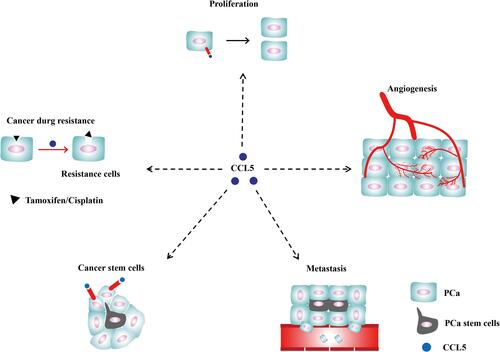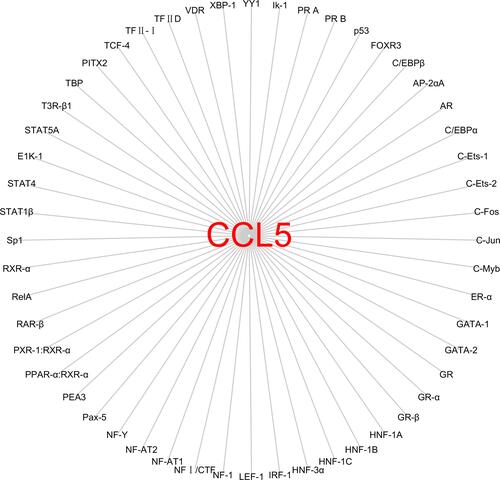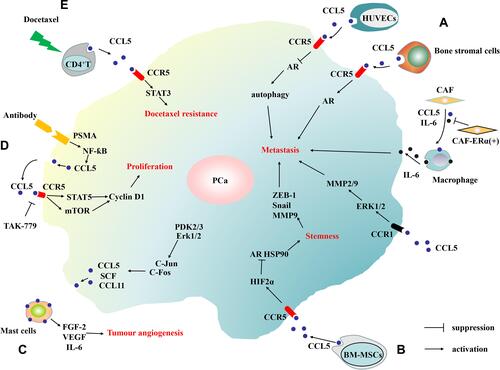Figures & data
Figure 1 The role of CCL5 in PCa. CCL5 promotes PCa proliferation, angiogenesis, metastasis, the formation of stem cells and drug resistance via the crosslinking with CCR5 or CCR1.

Table 1 The Therapeutic Effect of Drugs on the Action of CCL5/CCR5 Axis in Prostate Cancer
Figure 2 Model of the regions of the human CCL5 promoter. The regions A to E and G named in order of discovery and their base sequence and binding transcription factor were summarized. The percentages below each region demonstrate the percentage of CCL5 promoter activity remaining after deleting that region.

Figure 3 The transcription factor regulating CCL5 predicted by analysing the UCSC database. We firstly found the base sequence −2000 bp to 100 bp from the CCL5 transcriptional start point and then predicted the transcription factor with the base sequence through using the PROMO database with 5% fault tolerance.

Figure 4 The schematic diagram of the downstream pathways of CCL5 in PCa. (A) The human umbilical vein endothelial cells (HUVECs), bone stromal cells, macrophages and cancer-associated fibroblasts (CAF) can promote PCa cell metastasis by secreting CCL5 in tumor microenvironment. (B) By secreting CCL5, bone marrow mesenchymal stem cells (BM-MSCs) promote PCa metastasis and stemness. (C) By secreting CCL5, PCa recruit mast cells which can release FGF-2, VEGF and IL-6 to promote angiogenesis. (D) CCL5 promotes the proliferation of prostate cancer. (E) CCL5 promotes the drug resistance of prostate cancer.

